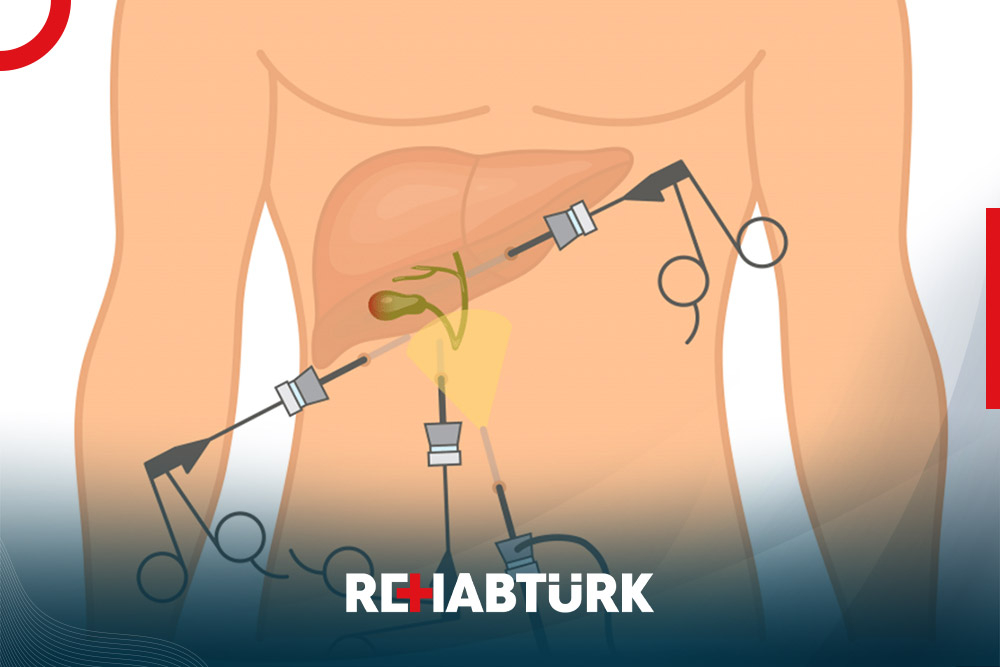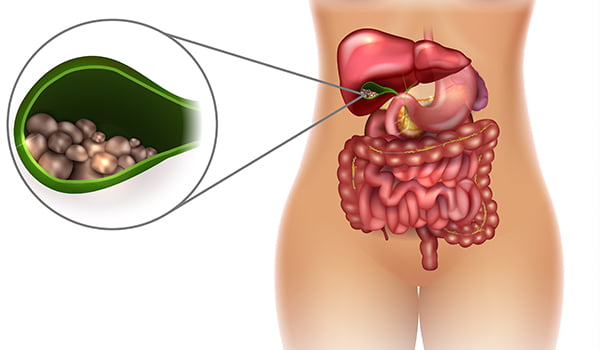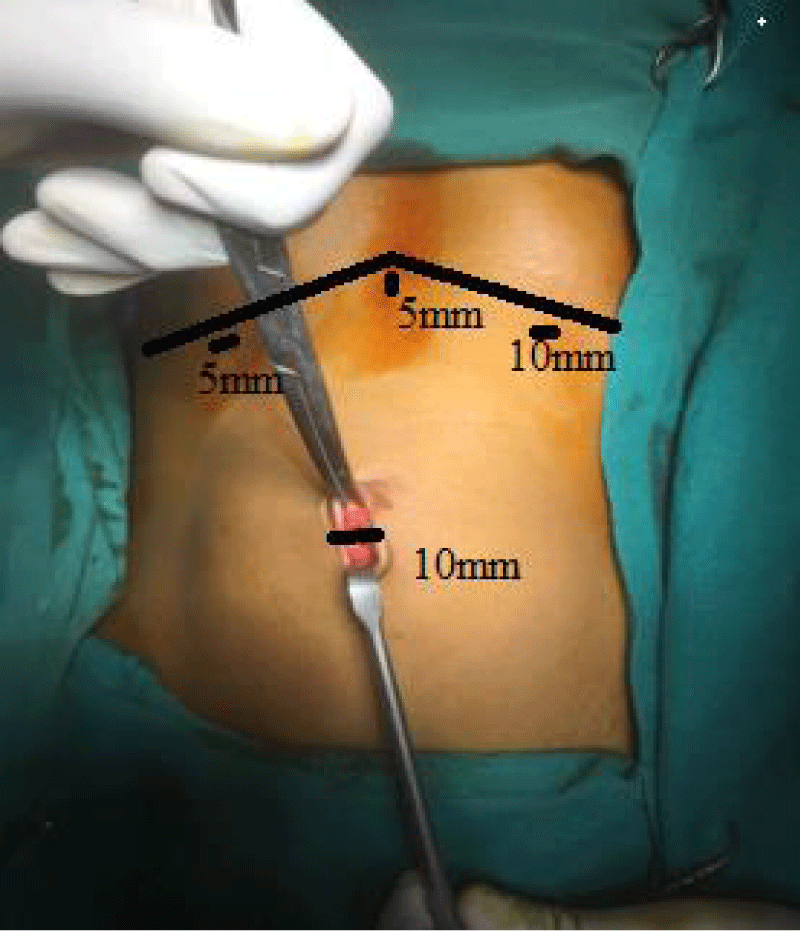Laparoscopic cholecystectomy in Türkiye
Laparoscopic cholecystectomy is a minimally invasive surgery performed to remove the gallbladder by opening several small surgical incisions. It is characterized by a quick recovery and the ability of patients to return home after the operation on the same day.

What is Gallbladder ?
The gallbladder is an organ in the shape and size of a small pear located in the upper right side of the abdomen, just below the liver. Its length is approximately 10 cm. Its main function is to store bile, which is necessary for the digestion of fatty substances.
Why remove the gallbladder?
Laparoscopic cholecystectomy helps people with gallstones that cause pain and infection. These stones are crystals that form there and obstruct or prevent the flow of bile into the digestive system, which also causes inflammation of the gallbladder. These stones can also move to other parts of the body and cause more health problems.
Symptoms of gallstones include:
- feeling bloated
- fever.
- Jaundice (yellow-looking skin).
- nausea.
- Pain in the right side of the abdomen that may radiate to the back or shoulder.

What is the importance of cholecystectomy?
The removal of the gallbladder helps to curb the pain and treat the infection caused by the gallstones. If left untreated, the pain and infection may increase, and the gallbladder may burst, threatening the patient’s life.
What are the advantages of laparoscopic cholecystectomy?
The doctor determines whether this procedure is suitable for the patient or whether the open resection procedure is more appropriate, but this procedure generally has several advantages, including:
- Less pain.
- Low risk of complications.
- faster recovery.
Steps to prepare for laparoscopic cholecystectomy?
First, the doctor performs several tests, including:
- Abdominal ultrasound.
- Blood analysis.
- Urinalysis (urine evaluation).
Secondly, he discusses several important matters with the patient, such as:
- medications he is taking.
- Options for how to control pain during and after surgery.
- Avoid food and liquids shortly before the procedure.
What happens during laparoscopic cholecystectomy?

First, the patient enters into a state of fainting by placing him under the influence of general anesthesia during the operation, and then the surgeon makes several incisions in the patient’s abdomen after that he inserts thin, hollow tubes through these incisions, followed by placing a laparoscope and other surgical tools through these tubes Then carbon dioxide gas is pumped into the abdomen. This is what works to inflate the surgical area and thus facilitate the vision inside. This is followed by separating the gallbladder from the rest of the body and removing it. Finally, the surgical incisions are closed through surgical clamps or the like.
Note: The surgeon may decide to use an open cholecystectomy if any complications occur during laparoscopic cholecystectomy, but this involves making a larger incision.
What happens after laparoscopic cholecystectomy?
The patient is placed under observation for a few hours after surgery until the patient wakes up from anesthesia without any complications, then the heart is examined, blood pressure and the patient’s ability to urinate are measured.
What are the possible risks or complications?
Laparoscopic cholecystectomy involves some risks, like other surgeries, but they are rare, including:
- Leakage of bile into the body.
- Bleeding.
- Complications from anesthesia.
- hernia.
- Infection of the bile ducts, liver or intestines.
- Numbness in the surgical area.
- inflammation.
- Surgical incision scarring.
- Urinary tract infection.
What is the time required to stay overnight in the hospital?
The patient returns home on the same day of the surgery, provided that no complications occur, compared to the open procedure, which requires one or two days of overnight stay.
What are the methods of care after laparoscopic cholecystectomy?
- Avoid lifting heavy objects.
- Drink plenty of water.
- Eat high-fiber foods to help have a bowel movement.
- Follow the doctor’s instructions about wound care methods and medication appointments and doses.
- Slowly increase physical activity and walk every day to prevent blood clots.
You should contact your doctor if the following appears:
- goosebumps.
- Abdominal cramps or severe pain.
- a rise in temperature;
- Incision problems such as bleeding, swelling, redness, or a bad smell.
- No bowel movement for three days.
- vomiting.
- yellow skin.

Laparoscopic cholecystectomy in Türkiye
The medical staff of surgical teams, doctors and consultants in REHABTÜRK can provide the best treatment options and free consultations – by striving to keep abreast of the latest medical technologies and methods.

